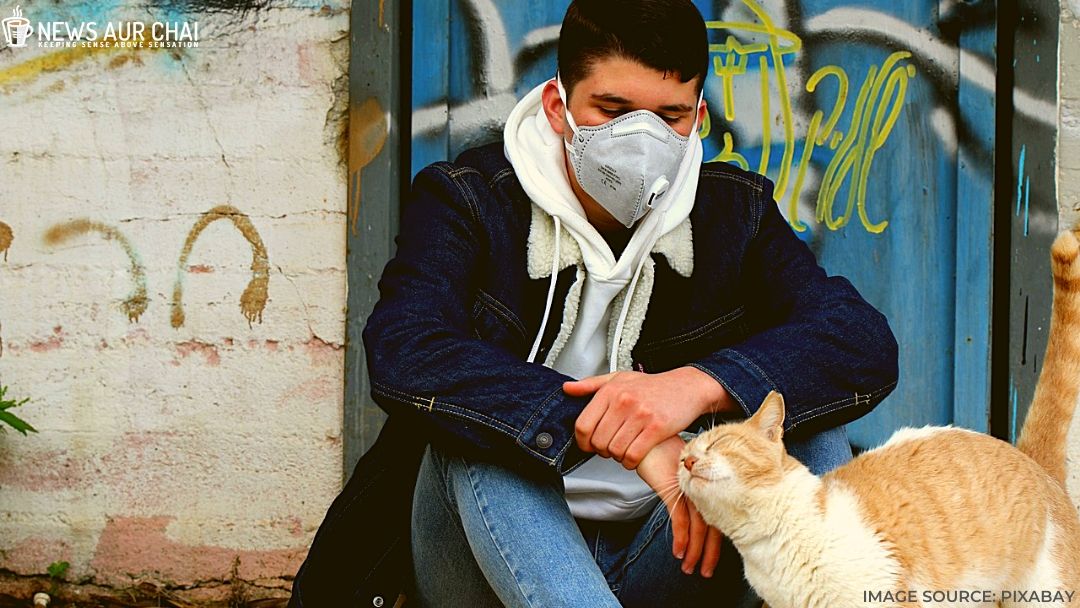
While the world battles a global pandemic, another one seems to be slowly unfurling in the shadows as millions of people silently wage a struggle in a place where masks and social distancing norms cannot protect them- their minds.
According to an analysis by Feeding America, approximately 54 million Americans would go hungry this week, if they fail to receive aid. Facing one of the most significant unemployment rates (over 40%) since the Great Depression hasn’t helped either. Researchers and mental experts foretell an increase in the already rising suicide rates if the crisis continues.
India, which recently announced the nationwide lockdown’s fourth extension till June 30th, is expected to face similar repercussions. According to the report released by Centre for Monitoring Indian Economy (CIME) on Monday, the unemployment rate rose to 23.48% in May, only marginally decreasing from April’s 23.52%.
An increase in unemployment levels will lead to a rise in stress, anxiety, depression, and poverty, resulting in rising alcohol dependence, gender-based violence, and starvation.
With a population of over 150 million people already diagnosed and affected with mental issues, the negative impact of the coronavirus on mental health extends to people constituting other parts of the population as well, including health care and sanitation workers, the elderly, children, young adults, women and the differently-abled.
Impact of Social Distancing on Suicide Rates and Overall Mental Health
While it is a useful measure in dealing with preventing the transmission of COVID-19, social distancing is taxing on mental health. According to a study published in the American Medical Association Journal titled, ‘Suicide Mortality and Coronavirus Disease 2019 – A Perfect Storm’, social isolation is the second-highest risk factor causing suicide in the lockdown after Economic stress, in the United States.
Social distancing and isolation deprive human beings of the interactions and social connections that play a vital role in suicide prevention. The study also states that ‘Individuals experiencing suicidal ideation may lack connections to other people and often disconnect from others as suicide risk rises.’
Other risk factors include decreased access to community and religious support, barriers to treatment of mental health issues, pre-existing medical conditions among a few.
In India, during the first nationwide lockdown, imposed for 21 days from March 24th till April 14th, a study conducted by the Indian Psychiatric Society reported that concerns regarding mental health issues had escalated by an alarming 20%. The problems included a variety of matters like depression, anxiety, substance abuse, sexual abuse, and domestic violence. The study also stated that stress and panic attacks had increased by 35%.
In the first week of May, an online survey on ‘Depression and Corona’ was conducted by Dr. Jugal Kishore, Head of Department of Community Medicine at the Vardhaman Mahavir Medical College and Safdarjung Hospital. The survey had over 400 respondents from various walks of life, and the results showed that over 30% of them had shown signs of depression.
According to the Business Standard news report, Dr. Kishore felt that such a high rate might lead to the suspension of self-care and harmful behavior, which may put the affected persons at risk of catching the infection.
Another rising concern among affected people is the accessibility of prescribed medicines. Many people might face problems restocking their medications with old prescriptions as pharmacies are usually wary of supplying benzodiazepines or sleeping pills, according to Dr. Ajish Mangot, a psychiatrist from Maharashtra, as stated to Business Standard.
Dealing with the Impact
The World Economic Forum launched a volunteer helpline to deal with the mental health problems that would arise due to unemployment, social isolation, and several other factors during the lockdowns. In a report, the WEF stated that ‘India’s already overburdened mental health machinery will be unable to handle this unfolding situation, and will need to leverage the power of communities with locally devised, evidence-based solutions’
Three solutions they suggest include:
• Destigmatization
• Community Infrastructure for Support
• Increasing resilience among children and adolescents
Destigmatization deals with addressing the stigma surrounding COVID 19 patients who tested positive, those who’ve recovered, and healthcare professionals who’ve treated them. They are mistreated and shunned by those around them out of fear of getting infected. The WEF suggests using social media to reach out to the crowd and let them know more about the disease, its treatment, and the experiences of those who’ve been infected and have recovered.
The forum also suggests a community-based approach, where there will be ‘a close partnership between civil society, local administration, and a standardized training and technology backbone’ to make up for the insufficiency of mental health professionals in India.
Finally, it is crucial to protect vulnerable children and adolescents from mental or sexual abuse, along with psychological distress caused by the collective fear of those around them. While this is a challenging task to address at this crucial time, organizations like UNICEF warn governments of the long-lasting social and economic impact these issues might have on future generations if left unaddressed.






One Comment